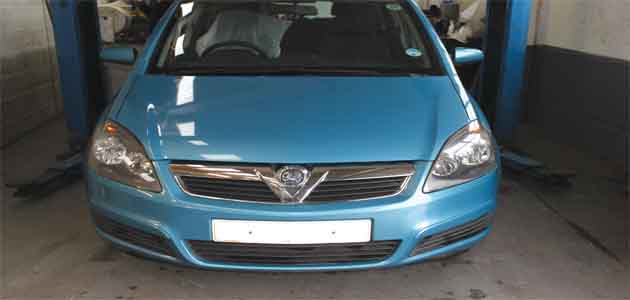
The Vauxhall Zafira may sound like a daunting vehicle on which to change a cambelt, but with a little know-how and the appropriate tools it will prove to be an ideal repair for the independent garage business.
The engine on these vehicles has been identified as an ‘interference’ type so the likelihood of engine damage if the cambelt breaks is very high. Before carrying out any work disconnect the battery earth cable. It is important that belt tensioning is performed on an engine at ambient room temperature. Always turn the engine in the normal direction of rotation only (unless advised otherwise by the OEM fitting instructions) and recommended manufacturer’s torque values should always be used. We also advise changing the tensioners and the idlers when replacing the cambelt.
A two-post ramp is ideal for carrying out the replacement and it is vital that the appropriate timing belt replacement tools are used; these are readily available from most motor factors. If the vehicle is equipped with alloy wheels then chances are it’ll have locking wheel nuts/bolts, so it’s a good idea to locate the adapter key for these before you start.
Open the bonnet and remove the battery earth cable. Remove the bolts securing the engine cover and lift it off. Disconnect the Mass Air Flow (MAF) sensor connector and undo the jubilee clips connecting the air intake pipe to the inlet. Undo the single torx bolt (Fig 1) securing the air filter housing to the chassis and with a sharp tug lift out (Fig 2) the complete housing.
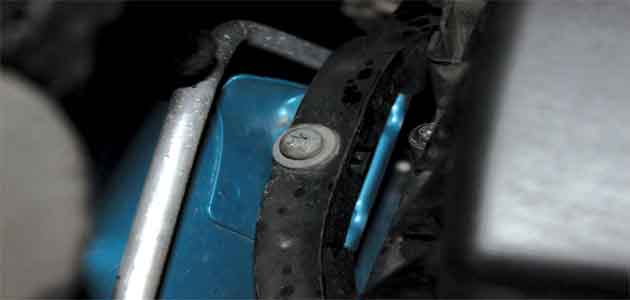
Fig 1
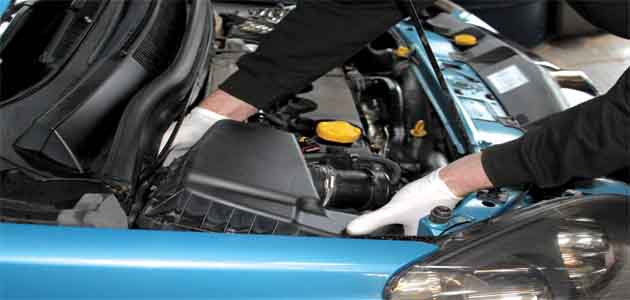
Fig 2
Remove the wheel
Raise the vehicle halfway and remove the offside wheel. Remove the wheel arch liner and separate it into two sections. Raise the vehicle further and, with support, unbolt the engine undertray. Retract the auxiliary belt tensioner and retain it in position using a pin. Remove the auxiliary belt, taking care to mark its rotation if it’s being re-used. Unbolt the auxiliary belt idler and tensioner and remove the crankshaft pulley damper by removing the four bolts.
Support the engine using a support beam from below the engine (the wings are too fragile) and lower the vehicle to the floor. Unbolt the timing belt cover and release the harness from the outer sections. Unbolt the complete engine mounting assembly (pictured below) including the large bracket attached under the timing belt cover.
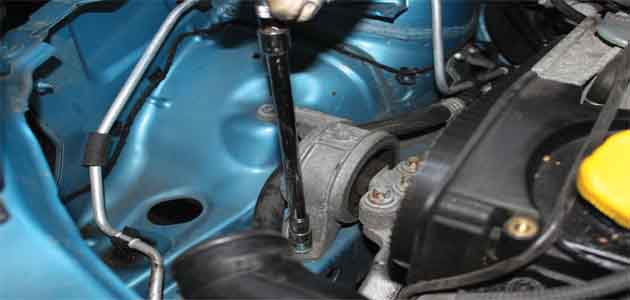
With the cover removed align the timing marks on the camshaft (Fig 4) and install the crankshaft locking tool (Fig 5) to hold it in position.
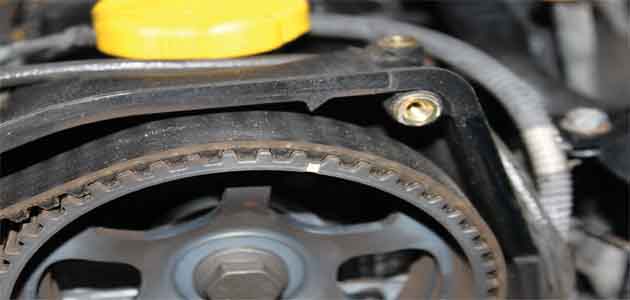
Fig 4
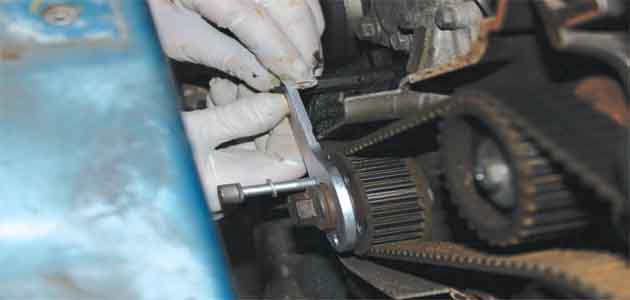
Fig 5
Slacken and remove the timing belt tensioner, idlers and the belt then install the new belt tensioner and idlers. Tighten the idlers to the correct torque setting but leave the tensioner finger tight for the moment.
Insert a bolt into the unused hole just below the tensioner and use a screwdriver to lever the flange (pictured below) on the face of the tensioner.
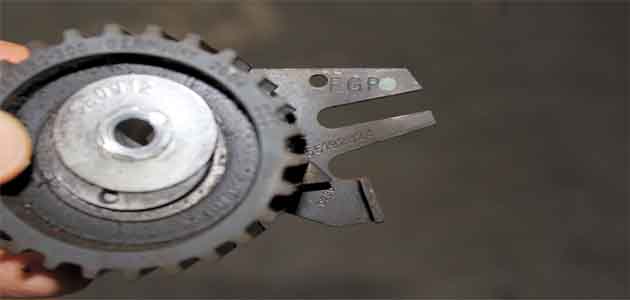
Observe the tensioner indicator lever on the tensioner until the indicator is opposite the small round hole (pictured below).
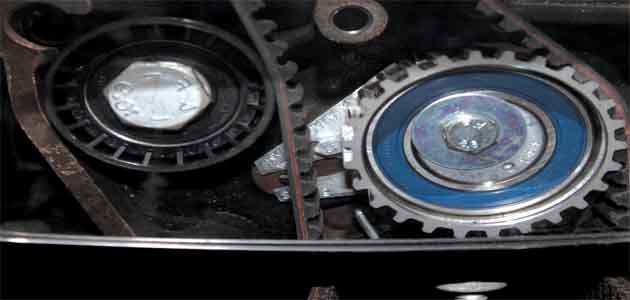
Tighten the tensioner bolt to the correct torque setting and rotate the engine until the timing marks are aligned and the locking tool can be refitted. If the timing and/or tensioner marks are found to be out of alignment, or the crankshaft locking tool can’t be fitted, the tensioning process will need to be repeated.
Installation is the reverse of removal but, before re-fitting the auxiliary drive belt, check its condition and all its driven components for excessive wear and consider replacing them. As with any drive belt replacement, before starting the engine it is advisable to turn the engine in the direction of rotation a few times from the crankshaft to make sure the engine doesn’t lock up or any abnormal noises are heard.









